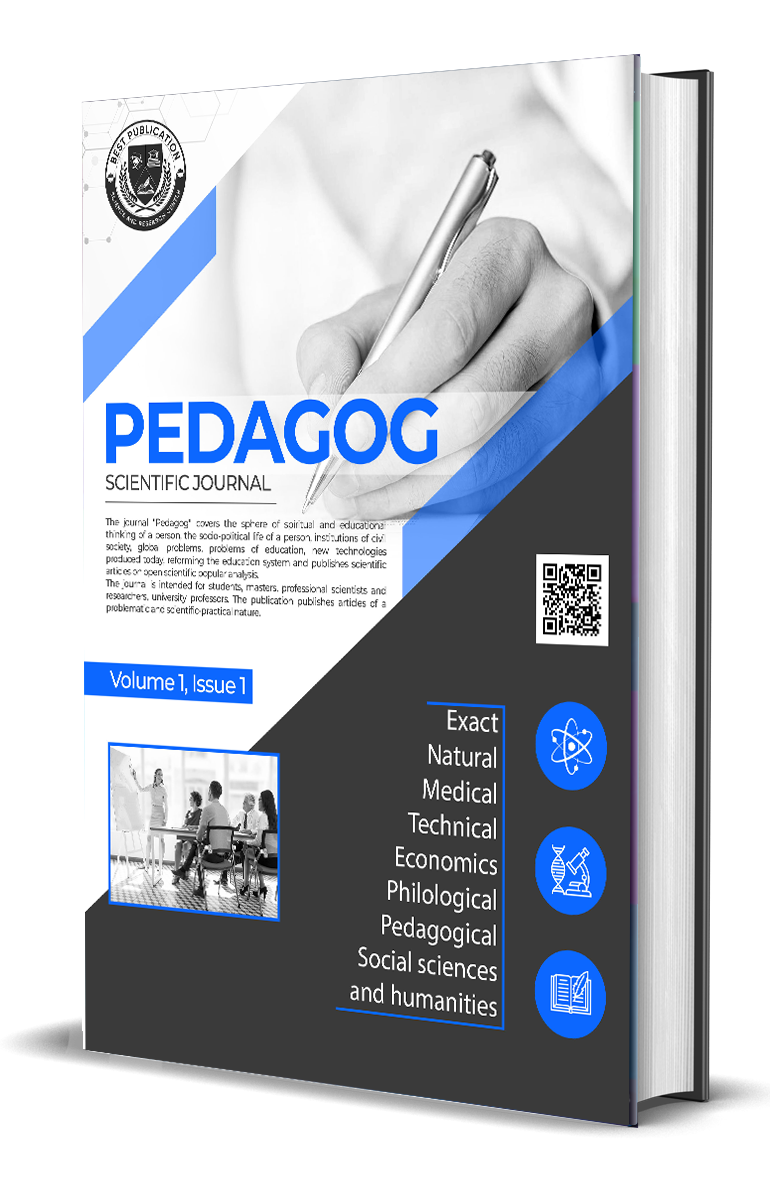THE ROLE OF SEMANTICS IN GENERATIVE AND COGNITIVE LINGUISTICS
Keywords:
emphasize, semantic, cognitive, rule, universal, syntactic, analyze, phrases, combine, determine, approach, meaningful, provide, experience, metaphor, metonymy, conceptual blending, prototype formation.Abstract
Semantics is the branch of linguistics that focuses on the study of meaning in language. It plays a crucial role in both generative and cognitive linguistics, two theoretical frameworks that aim to understand how language is structured, processed, and acquired by humans. This paper aims to delve into the importance of semantics within these two linguistic frameworks.
References
Brame, Michael K. (1976). Conjectures and refutations in syntax and semantics. New York: North-Holland Pub. Co. ISBN 0-7204-8604-1.
Chomsky (1957). Syntactic Structures. The Hague: Mouton.
Chomsky (1965). Aspects of the Theory of Syntax. Cambridge: The MIT Press.
Chomsky (1965). Cartesian linguistics. New York: Harper and Row.
Dougherty, Ray C. (1974). Generative semantics methods: A Bloomfieldian counterrevolution. International Journal of Dravidian Linguistics, 3, 255-286.
Dougherty, Ray C. (1975). Reply to the critics on the Bloomfieldian counterrevolution. International Journal of Dravidian Linguistics, 4, 249-271.
Fodor, Jerry A.; & Katz, Jerrold J. (Eds.). (1964). The structure of language. Englewood Cliffs, NJ: Prentice-Hall.
Harris, Randy Allen. (1995). The linguistics wars. Oxford University Press. ISBN 0-19-509834-X.
Huck, Geoffrey J.; & Goldsmith, John A. (1995). Ideology and Linguistic Theory: Noam Chomsky and the deep structure debates. New York: Routledge.
Katz, Jerrold J.; & Fodor, Jerry A. (1964). The structure of a semantic theory. In J. A. Fodor & J. J. Katz (Eds.) (pp. 479–518).
Katz, Jerrold J.; & Postal, Paul M. (1964). An integrated theory of linguistic descriptions. Cambridge, MA: MIT Press.
Lakoff, George. (1971). On generative semantics. In D. D. Steinberg & L. A. Jakobovits (Eds.), Semantics: An interdisciplinary reader in philosophy, linguistics and psychology (pp. 232–296). Cambridge: Cambridge University Press.
Lakoff, George. (1976 [1963]). Toward generative semantics. In J. D. McCawley (Ed.) (pp. 43–61).
Lakoff, George; & Ross, John R. [Háj]. (1976). Is deep structure necessary?. In J. D. McCawley (Ed.), Syntax and semantics 7 (pp. 159–164).
McCawley, James D. (1975). Discussion of Ray C. Dougherty's "Generative semantics methods: A Bloomfieldian counterrevolution". International Journal of Dravidian Linguistics, 4, 151-158.
McCawley, James D. (Ed.). (1976a). Syntax and semantics 7: Notes from the linguistic underground. New York: Academic Press.
McCawley, James D. (1976b). Grammar and meaning. New York: Academic Press.
McCawley, James D. (1979). Adverbs, vowels, and other objects of wonder. Chicago: University of Chicago Press.
Postal, Paul M. (1972). The best theory. In S. Peters (Ed.), Goals of linguistic theory. Englewood Cliffs, NJ: Prentice-Hall.
Ross, John R. (1967). Constraints on variables in syntax. (Doctoral dissertation, Massachusetts Institute of Technology). Free copy available at http://hdl.handle.net/1721.1/15166. (Published as Ross 1986).
Ross, John R. (1986). Infinite syntax!. Norwood, NJ: ABLEX, ISBN 0-89391-042-2.
Ross, John R. [Háj]. (1970). On declarative sentences. In R. A. Jacobs & P. S. Rosenbaum (Eds.), Readings in English transformational grammar (pp. 222–272). Washington: Georgetown University Press.
Ross, John R. [Háj]. (1972). Doubl-ing. In J. Kimball (Ed.), Syntax and semantics (Vol. 1, pp. 157–186). New York: Seminar Press.
Seuren, Pieter A. M. (1974). Semantic syntax. Oxford: Oxford University Press.












